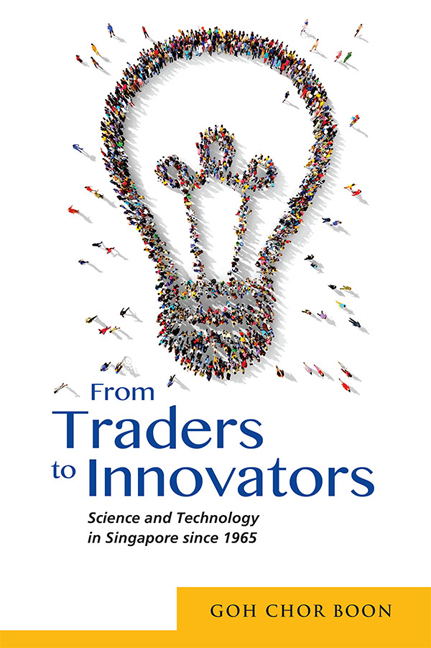Book contents
- Frontmatter
- Contents
- List of Abbreviations
- Introduction
- 1 From Dependency Theory to Creative Innovation
- 2 Surviving and Catching Up in the 1960s and 1970s
- 3 Developing a Technological Growth Trajectory in the 1980s
- 4 State Intervention and Technological Change
- 5 Nurturing a Scientific Culture
- 6 Sociocultural Attributes and R&D
- 7 Towards a Technologically Creative Society
- 8 Conclusion: Power of a Service-Brokerage Culture
- Bibliography
- Index
- About the Author
2 - Surviving and Catching Up in the 1960s and 1970s
Published online by Cambridge University Press: 19 May 2017
- Frontmatter
- Contents
- List of Abbreviations
- Introduction
- 1 From Dependency Theory to Creative Innovation
- 2 Surviving and Catching Up in the 1960s and 1970s
- 3 Developing a Technological Growth Trajectory in the 1980s
- 4 State Intervention and Technological Change
- 5 Nurturing a Scientific Culture
- 6 Sociocultural Attributes and R&D
- 7 Towards a Technologically Creative Society
- 8 Conclusion: Power of a Service-Brokerage Culture
- Bibliography
- Index
- About the Author
Summary
The 1950s and 1960s were turbulent decades in Singapore's history. They highlighted the vulnerability of the state and the economy, which was highly dependent on external developments, both regional and worldwide. When Singapore became a sovereign state in August 1965, her leaders were faced with the unenviable task of ensuring the political and economic survival of the small city-state. Colonialism had produced a lopsided economy strongly dependent on entrepôt trade. But the world was changing fast. Increasingly, science and technology became the vital ingredients that would dictate a country's level of competitiveness. Hence, the overriding priority of the Singapore Government in 1965 was to find the quickest and most effective way to develop an industrialized economy. However, it is argued here that historical forces continued to dictate the nature of Singapore's industrialization programme. Moreover, Singapore's industrial strategies adopted during this period had little impact on the growth of the indigenous technological capability of the country.
THE GEOPOLITICAL SCENARIO, 1942–65
On 15 February 1942, the British Commander General E. Percival surrendered the “impregnable fortress” of Singapore to the Japanese. The fall of Singapore “meant not just the end of a campaign; it meant the end of an age”. Singapore was renamed “Syonan-to”, or “Light of the South”, and, together with Malaya, became a part of Japan's Greater East Asia Co-Prosperity Sphere. However, like the British, the Japanese recognized its exceptional geographical advantages, and Singapore became the administrative centre of the Japanese Empire in Southeast Asia.
The economy of Singapore was shattered during the period of Japanese rule. Its infrastructure was badly damaged when the British, while retreating from Malaya, destroyed bridges, machinery and motor workshops, oil depots, railway lines, and other public installations. The island's entrepôt trade and Malaya's export of raw materials such as tin and rubber were severely disrupted as Japanese rule cut off the main European markets. Japanese zaibatsu took over most of the economic assets of the British, American and Dutch. The local Chinese, too, lost most of their business concerns. Those suspected of loyalty to the Chungking government in China had their properties confiscated. In short, the Japanese conquest of Singapore exposed the structural weaknesses of the economy — the dependence on entrepôt trade and the virtual absence of an industrial sector.
- Type
- Chapter
- Information
- From Traders to InnovatorsScience and Technology in Singapore since 1965, pp. 28 - 50Publisher: ISEAS–Yusof Ishak InstitutePrint publication year: 2016



